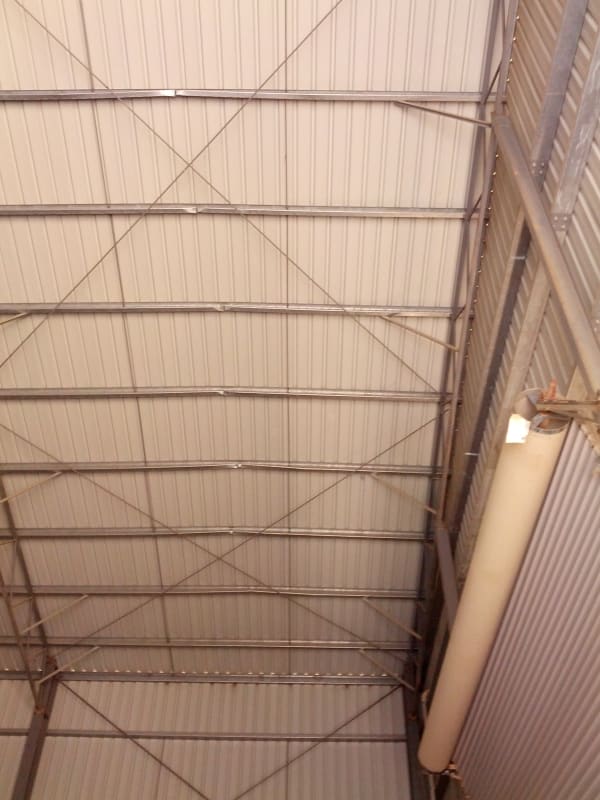Let's say you have a middle bay braced on the roof (includes roof and side walls). I understand that the roof bracing is designed like a truss and the roof purlins nearest the rod/rafter connection act as the vertical members and the rods act as the diagonal members. I have 2 questions I need help to understand.
1) Is the roof bracing 'truss' usually just designed based on typical purlin spacing for the truss upright spacing, selecting some type of diagonal rod layout to make up the diagonals of the truss, and calc typical truss stresses based on wind/seismic?
2) Are the roof purlins (z or c shape) typically designed to be stiff enough to carry the compressive load to the braced bay? I see most roof designs on these buildings aren't designed to act as a diaphragm so that leaves the purlins.
1) Is the roof bracing 'truss' usually just designed based on typical purlin spacing for the truss upright spacing, selecting some type of diagonal rod layout to make up the diagonals of the truss, and calc typical truss stresses based on wind/seismic?
2) Are the roof purlins (z or c shape) typically designed to be stiff enough to carry the compressive load to the braced bay? I see most roof designs on these buildings aren't designed to act as a diaphragm so that leaves the purlins.

